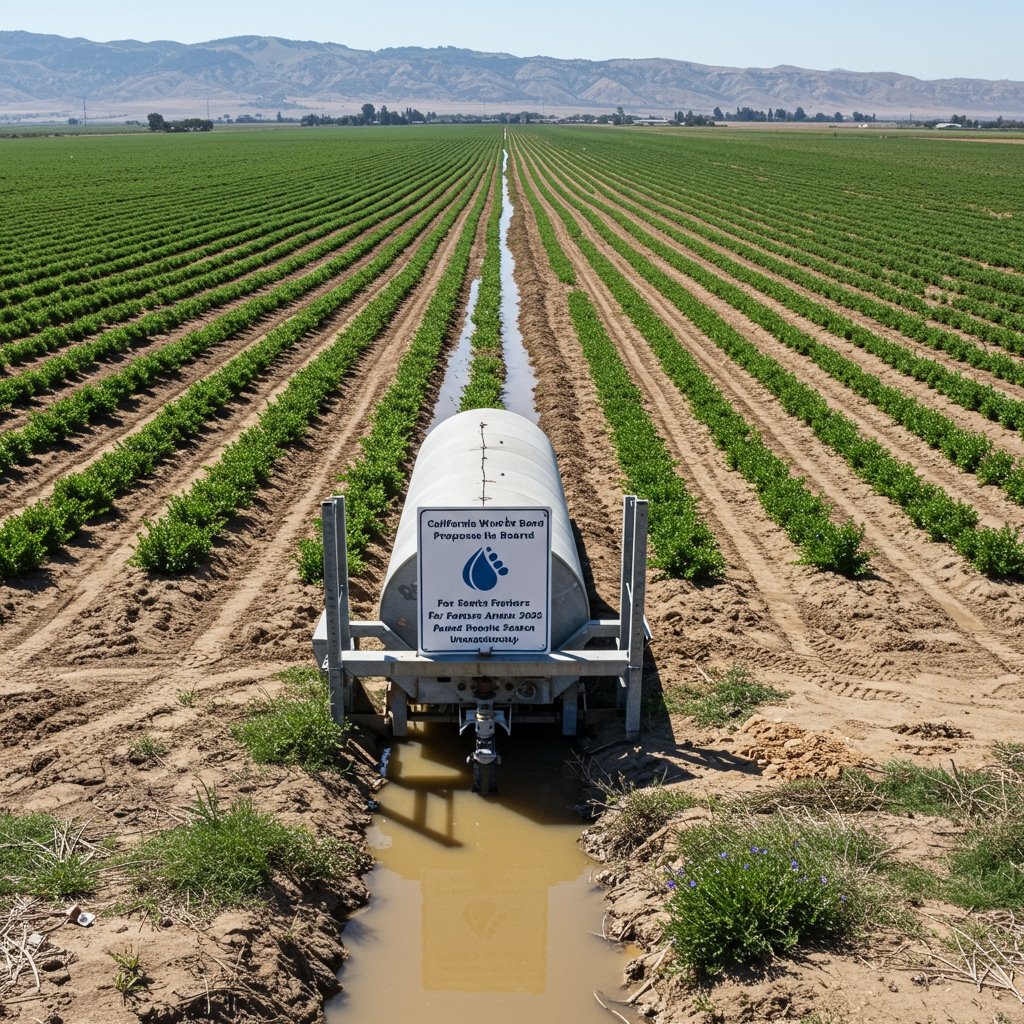California Farmers Face Potential Water Supply Reduction
SACRAMENTO, CA – The agricultural sector across California is bracing for significant challenges as the State Water Resources Control Board unveiled draft emergency regulations on March 20, 2025, that could drastically curtail water deliveries to farmers. These proposed measures target several key West Coast farming areas, including the vital Central Valley, a region responsible for a substantial portion of the nation’s fruit, vegetable, and nut production. The regulations are a response to ongoing concerns over water availability following variable precipitation patterns experienced in recent periods, coupled with the state’s persistent need to prioritize water for essential municipal and environmental uses.
Details of the Proposed Emergency Regulations
The draft regulations, still subject to public review and potential modification, outline a framework for mandatory reductions in water diversions and deliveries for certain agricultural water rights holders. While the precise percentage of cuts would vary depending on hydrological conditions and the specific water right priority, the proposals signal a potential return to, or intensification of, restrictions seen in previous dry years. The State Water Board emphasizes that these emergency measures are necessary to ensure adequate supplies remain for core human health and safety needs, as well as to protect sensitive ecosystems and threatened species that depend on instream flows.
Rationale and Objectives
According to the State Water Board, the decision to draft these regulations stems from a comprehensive assessment of current reservoir levels, snowpack data, and long-term climate forecasts. Despite some areas receiving average or near-average precipitation, the overall statewide water picture, particularly concerning groundwater basin health and cumulative storage deficits, necessitates proactive conservation measures. The proposals aim to create a legal and operational mechanism to swiftly implement water use limitations should conditions warrant, thereby preventing potentially more severe shortages later in the year. The board maintains that prioritizing essential needs ensures resilience in the state’s water system.
Industry Reaction and Concerns
Leading agricultural organizations have voiced strong opposition and significant concern regarding the timing and potential severity of the proposed cuts. Industry groups, such as the influential California Farm Bureau, have been particularly vocal in their criticism. They argue that unveiling draft regulations potentially just weeks before the typical commencement of the critical spring planting season places farmers in an untenable position.
Farm Bureau representatives highlighted that agricultural operations require certainty regarding water availability months in advance to make crucial decisions about crop selection, acreage to plant, and necessary investments in supplies and labor. The specter of sudden, deep cuts creates immense operational and financial uncertainty, potentially leading farmers to fallow fields or plant lower-value, less water-intensive crops, impacting both individual farm viability and the broader state economy.
Potential Impacts on Key Crops and Regions
The proposed reductions pose a direct threat to farmers in regions heavily reliant on surface water deliveries, including agricultural powerhouses like Fresno and Kern counties within the Central Valley. These areas are major producers of water-sensitive permanent crops such as almonds, as well as various row vegetables. Reduced water availability during critical growth stages can severely impact yield and crop quality, leading to substantial financial losses for growers. The California Farm Bureau warned specifically of the negative impacts on overall yield for these high-value crops, compounding existing challenges related to market prices, labor costs, and regulatory compliance.
Water Rights Priority Under Threat
A key point of contention and complexity within the proposals is how the cuts will be implemented based on California’s complex system of water rights, which are largely based on seniority. Holders of senior water rights, those established earliest in time, typically have priority during periods of scarcity. However, the draft emergency regulations suggest that under severe conditions, even some senior rights holders could face curtailment or reporting requirements, though the impact could differ significantly based on priority class. Junior water rights holders, who are usually the first to be cut, would likely bear the brunt of any initial restrictions, but the scope of these emergency rules appears broader than typical curtailments.
Timeline and Path Forward
The California State Water Resources Control Board is currently in a public comment period, actively seeking input from stakeholders, including agricultural groups, environmental organizations, municipal water agencies, and the public. A series of public meetings and opportunities for written comments are scheduled to gather feedback on the technical aspects, potential impacts, and overall necessity of the proposed regulations. The board has indicated its intention to consider all comments before making a final decision.
The board is set to deliberate on the adoption of these emergency rules potentially by month’s end, creating a narrow window for feedback and decision-making. The swift timeline adds to the pressure on farmers who need to finalize their planting plans for the upcoming 2025 growing season.
Uncertainty Looms Over 2025 Growing Season
As the State Water Board moves towards a potential decision, the looming threat of significant water cuts creates a cloud of uncertainty over the 2025 agricultural season. Farmers are caught between the need to plan and invest for the coming year and the possibility of having their primary input – water – severely restricted. The outcome of the board’s deliberations will have profound implications not only for individual farming operations in affected areas like Fresno and Kern counties but also for the broader agricultural supply chain, rural communities, and the availability and cost of food. The situation underscores the ongoing vulnerability of California’s water-dependent agriculture to climatic variability and regulatory responses aimed at managing limited resources.


















